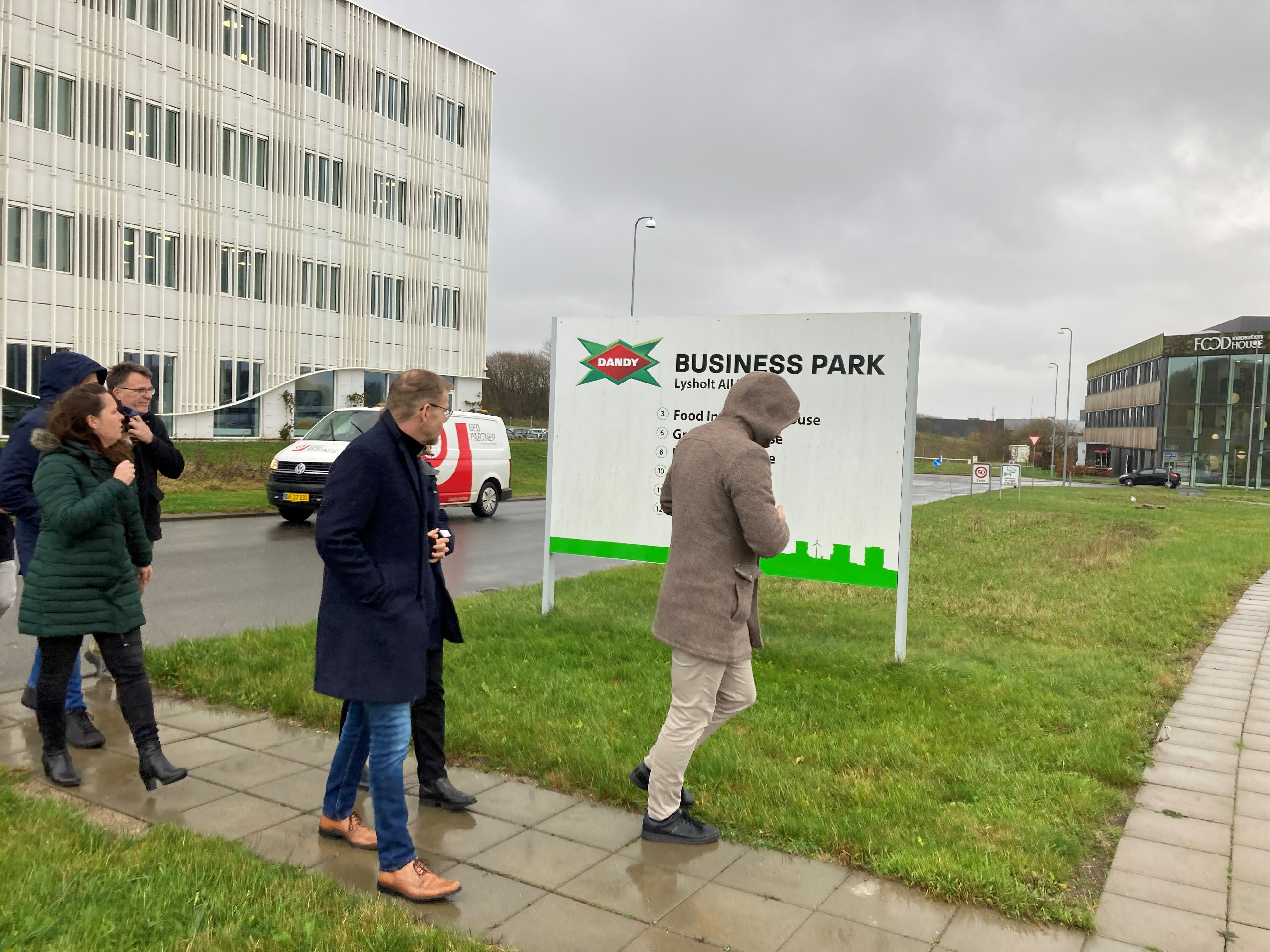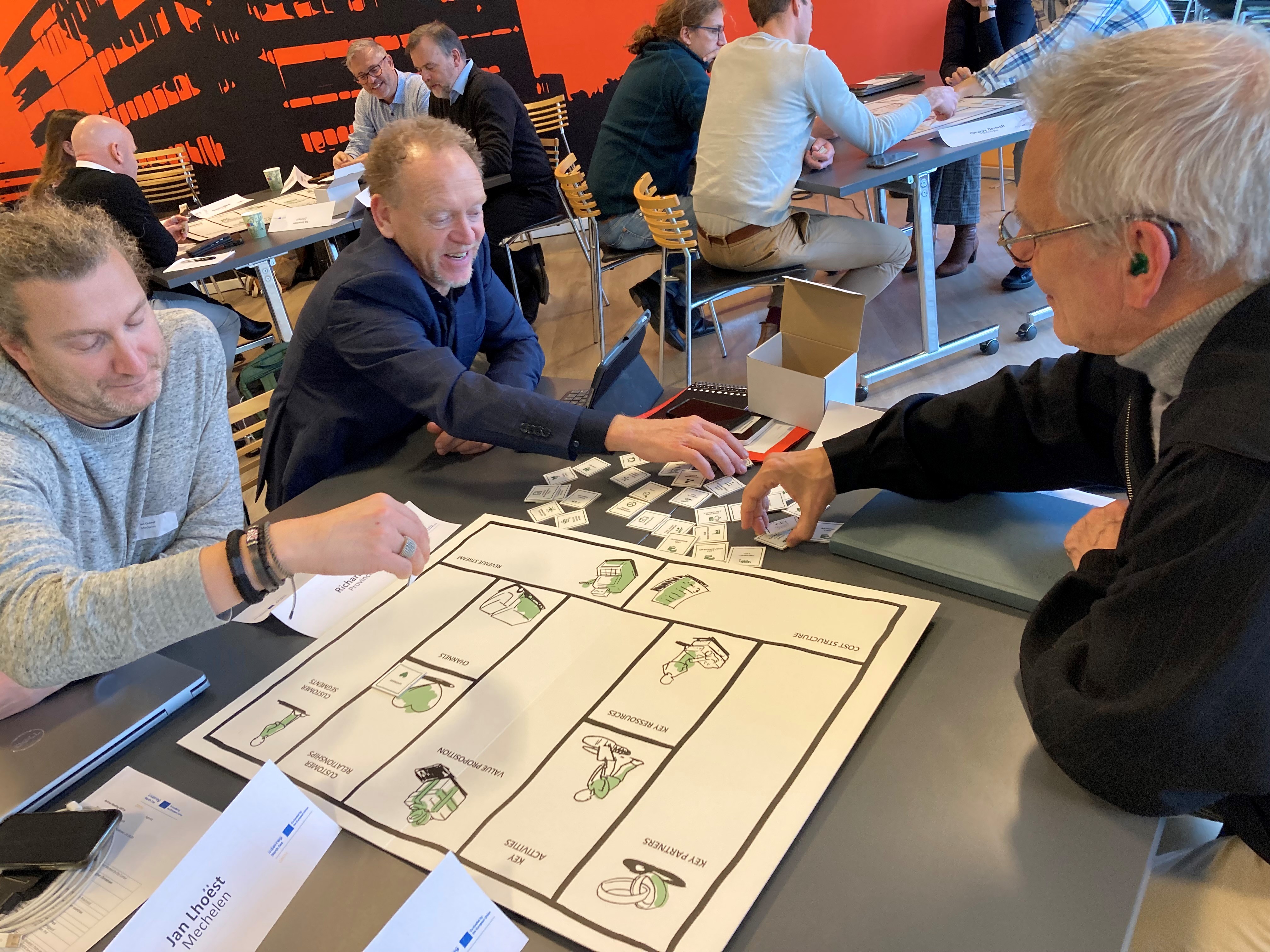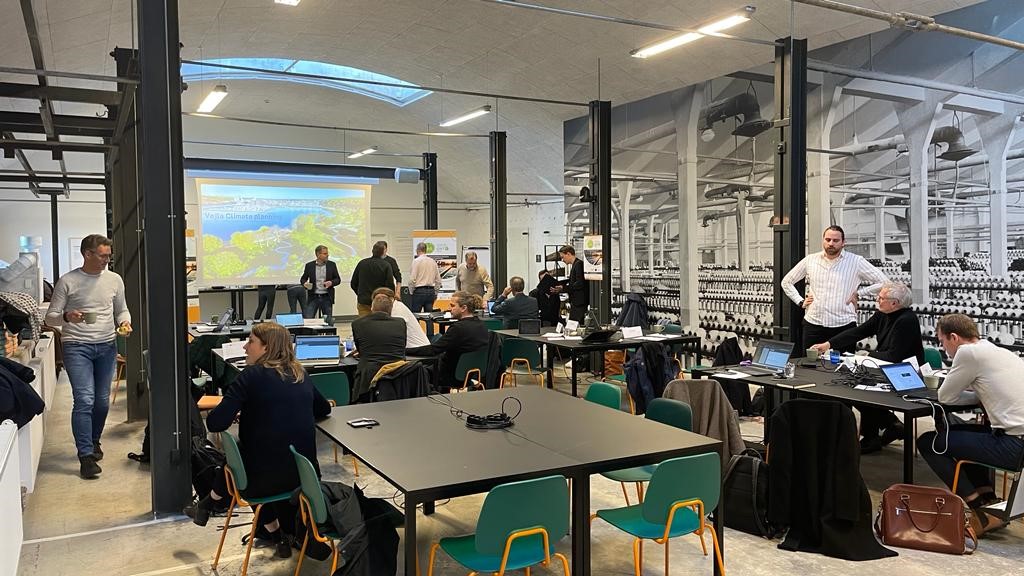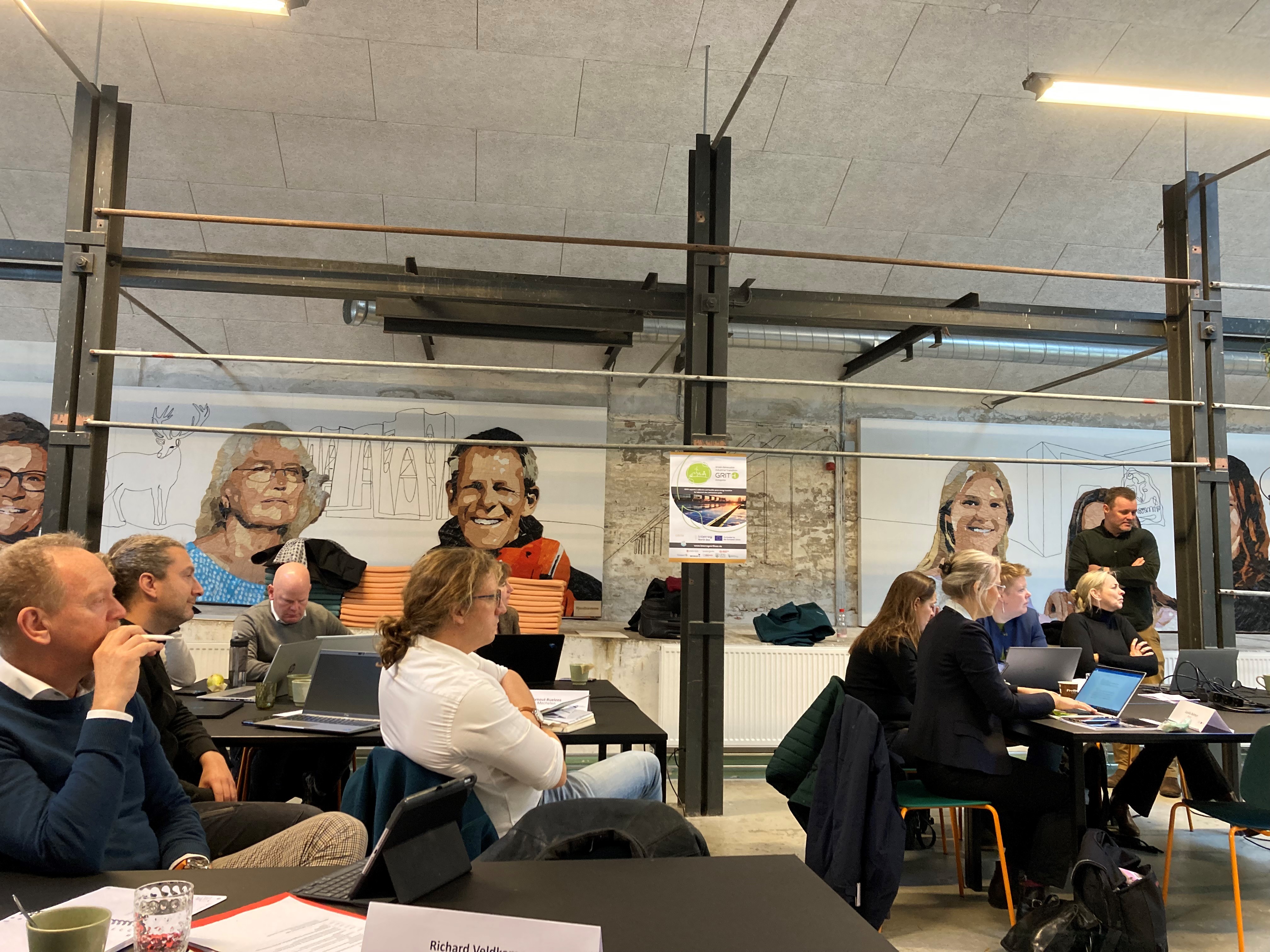On 23rd – 24th November, the GRITH partners got together again for their second physical meeting - this time in Vejle. In contrast to the weather (wet and windy!) we were warmly welcomed by our Danish partners who organized the perfect setting for a deeper dive into what the consortium aims to achieve in the coming years, and how we can optimize activities and results. The two-day meeting was packed with workshops, site visits, shared learnings and more.
During the official opening, Mayor Jens Ejner Christensen, outlined the Vejle’s goals to transform the regional energy landscape. As 5th largest municipality in Denmark, Vejle is a driving force in terms of innovation, climate plans and energy planning.
Similar challenges, regional differences
Recognizing similar challenges and regional differences, there was a short inventory amongst partners regarding the current status with recruiting sites and businesses, raising awareness and potential learning opportunities regarding challenges, practices, technologies and impacts. While some partners report high intrinsic motivation and private investments being used to research the most suitable technological solutions and infrastructures (e.g. green hydrogen and grid access), others are more focused on developing energy communities or creating different forms of organizational power. Synergies are being sought to develop fitting strategies and investment agendas with the various sites.
Concrete challenges include:
- Grid congestion
- Security of supply
- High energy prices
- Legislative framework
- Lack of urgency amongst small companies
Communication & split incentive
Communication is a key factor in raising awareness and activating sites and businesses in the green energy transition. Using the AIDA model (tracing the customer journey through Awareness, Interest, Desire and Action), the consortium has agreed on a number of tasks and tools to support stakeholder engagement such as:
- Co-creating a viable, ‘next generation’ business case
- Designing visual material to present different aspects – consumption, costs, sources
Polenergie offers a number tools according to project priorities, e.g. Sankey diagrams as a first visual step. Data is also essential when creating awareness but availability is an issue. General data can be used to create an overall picture.
When approaching stakeholders, GRITH partners are also aware of the differences between larger businesses and smaller companies and the difference between property owners and the actual companies. This split incentive can pose an extra hurdle.
Guest speakers
During the meeting, Vejle introduced a number of inspiring speakers. David Hartz fromEnerginet shared valuable insights regarding the EU power market with an outlook on projected energy pricing and regulations. David challenged several pre- assumptions about the economic storage of green energy and the need for subsidies. The participants learned that the EU power market, balancing energy and the security of supply, is targeting a ‘Day Ahead’ model with marginal pricing to provide transparent, competitive and fair priced energy to all EU citizens. Prices are formed based on supply and demand.
Ivan Pederson, (who previously shared his experience of developing an energy cooperation with local businesses during an online workshop ) was re-invited by GRITH to provide a more extended presentation on this local cooperation initiative – the Climate Partnership Vejle North. The strategic partnership between the Municipality and businesses from the Vejle North site is aiming for carbon neutrality by 2025 with tangible results from district heating, flexible industrial electricity consumption, green mobility and the local generation of renewable energy. Ivan shared the project’s methodology.

Touring the Dandy Business Park, Vejle
GRITH Tools
Ensuring that energy levels remained high, the partners were treated to an interactive afternoon with inspirational workshops on the Business Model Canvas tool from Kirsten Frandsen, who then stimulated the participants in co-creating a green business model. Learning by doing, it was a relevant exercise in how to use the nine building boxes that define how a business works and helps in understanding the businessman’s mindset. Adding to the GRITH toolbox, our Danish host Maibrit Lajgaard Pedersen also headed a short session on PESTLE and SWOT - both useful business analysis tools.

Using the Business Canvas to develop a viable green business plan
Spinderghallerne
Day 2 of the meeting found the partners in Spinderghallerne (The Spinning Mill), an inspirationalhistoric industrial building in Vejle city centre and Denmark's fastest growing development and innovation environment for people working in the field of business, design and art.
Also a great location to present the latest updates with regards to GRITH project management, our new website and the GRITH branding. Then, in order to gain a deeper understanding of each region and its GRITH context, representatives from Vejle and Boras shared their Municipal Climate Plans and decision-guiding visions, followed by further knowledge sharing from Danish and Belgian partners (Vejle and Mechelen) on energy planning.

The Spinning Factory, Vejle
Green economy, climate accounting
Invited speaker Joachim Steenstrup, Head of external Affairs & Strategy by Eurowind Energy, enlightened the group with regards to Energy Park Give and the green power to grid market developments across Europe. It was a morning full of exchange on green economy frameworks, carbon budgets, climate accounting, energy-climate strategies, local energy community development, green power sources and trading potential.

Future-proof resilient systems
The GRITH consortium is strongly committed to this collaborative approach to future-proof, resilient systems and is already planning the next online meeting to take a deeper dive into a number of relevant topics that cropped up during this most recent partner meeting.
Read more about PESTLE and SWOT analysis
Read more about the Business Model Canvas
